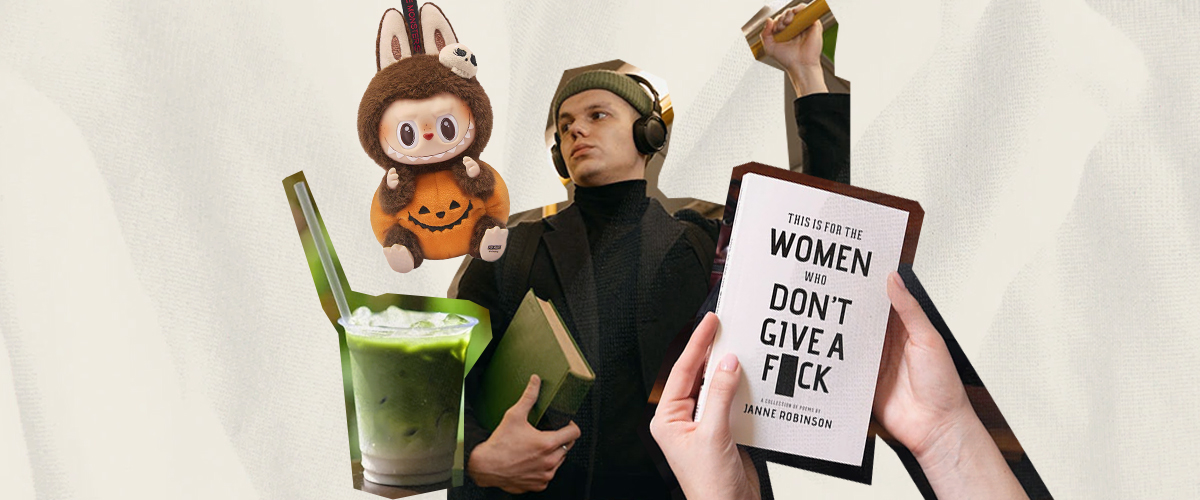OF course, you have seen them lately. Some of you might even know some of them.
The guy with the matcha latte in hand, tote bag slung over his shoulder, a stack of feminist books carefully peeking out as if to be photographed.
He sits in the corner of cafés, quoting bell hooks between sips, looking every bit the enlightened ally.
He seems new—another product of the TikTok generation—but the truth is, we’ve seen this performance before. Not in him exactly, but in his counterpart: the Pick Me Girl, that caricature of a woman who bends herself into a performance of “not like the other girls.”
She downs beer instead of cocktails— or so she brags (humbly, as with her, it must always be so). She distances herself from “girly” things, claiming she never really liked pink, or makeup, or Taylor Swift. Her playlist, she insists, is full of indie bands no one has ever heard of, unless of course the guys in the room have.
The Performative Man is cut from the same cloth, albeit in his case, he borrows femininity— or just enough of it— to look progressive.
But the purpose is the same: what he shows is not really a conviction but a performance. What he wants is recognition. The goal is not really to forward the agenda of women’s rights— but to look like so. The goal is to appear “woke” enough to achieve clout.
And so, welcome to the Social Signaling Olympics.
Pick Me Girls and the Disidentification with Femininity
There’s ongoing debate on how to define a ‘Pick Me Girl’ without turning the label into a weapon against women who simply have tastes outside the mainstream.
But perhaps the main characterization of Pick Me Girls lies not in their inherent tastes or traits, but in the intention—or the appearance—they seek to project.
Pick Me Girls, for example, thrive on a very particular kind of rejection: rejecting femininity itself. They position themselves as different or “not like other girls” and make it their whole personality.
Liking makeup, caring about fashion, or being obsessed with boy bands are treated as markers of weakness—things they claim to have outgrown.
By announcing this rejection, they signal to men that they are more rational, low-maintenance, and worthy of male approval.
The irony, however, is that by trying to escape the stereotype of the “basic girl,” Pick Me Girls end up reinforcing the same patriarchal structures that devalue femininity in the first place. They don’t challenge why feminine-coded things are demeaned; instead, they redirect that disdain to other women.
And so, it becomes less about individuality and more about subscribing to the male gaze by disidentifying from women who embrace their femininity. A Pick Me Girl’s preference is built not on what she authentically enjoys but on what she claims she is not. On what she thinks men would find cool instead.
This rejection may win her temporary validation, but it comes at the cost of solidarity, reinforcing the very limiting gender hierarchy she seeks to transcend.
Performative Man and the Hollow Allyship
At first glance, the Performative Man appears to be progressive. They distance themselves from the hypermasculine mold: loud bravado, aggression, the refusal of anything coded as “soft” or “feminine.” They embrace aesthetics that seem to embrace the norm. They pose with a tote bag, sipping matcha, and posting feminist books in their feed.
The look is curated, clean, and politically aware.
But their disidentification with traditional masculinity is not always about critically dismantling patriarchy. Again, what truly defines a Performative Man is not his preference or individuality, but—as his title suggests—his performance of it.
His allyship with the feminist ideals and concerns are not born out of critical scrutiny of the issue at hand but of a desire to gain recognition for his actions. If the tote bag, the latte, and the book are only signifiers, then the deeper structures of patriarchy remain untouched.
This mirrors what critics have described as woke capitalism. Corporations plaster rainbows on logos during Pride Month or push feminist taglines in ad campaigns, not out of genuine critique of hegemonic structures, but because these gestures are marketable.
In the same way, performative men adopt the symbols of progressiveness not to unsettle the male gaze, but to polish it. Wokeness becomes an accessory—an aesthetic trend—rather than a lived politics.
When disidentification is hollow, it does not actually break away from patriarchy; it merely repackages it in a softer, trendier form.
The danger here is that the audience, especially women, may confuse aesthetics for allyship, when in reality, the underlying dynamics of gender power remain intact.
On Social Signaling and Clout Chasing
Internet culture has turned disidentification into some kind of competitive sport. Social media platforms don’t just host identity conversations— they gamify them. The more loudly or visibly someone disavows a group, the more attention they attract.
This creates a cycle where signaling what you are not becomes more valuable than authentically embodying what you are.
The parade of callouts, the “performance” of allyship, and declarations of support might help a cause. But without meaningful actions to back them up, they begin to operate more like bids for social capital. Each statement becomes a performance staged for likes, retweets, or validation. The more extreme or witty the repositioning, the more viral it goes.
But the signaling economy can breed inauthenticity. People exaggerate their differences, adopt a contrarian stance, or reduce significant causes into cherrypicked aesthetics. They voice support not because they truly understand what is at stake but because it plays well in the algorithm. And a conviction born out of optics shares the same ephemerality as fads.
Soon, it devolves into one-manupship: who can be the most feminist ally, the most socially aware, the most detached from mainstream femininity or masculinity. What begins as resistance becomes a parody of the revolution behind it.
Instead of dismantling patriarchy or capitalism, “performative disidentification” gets commodified as content. And because clout is the ultimate prize, the line between critique and caricature blurs.
Disidentification stops being about transformation and turns into spectacle—an endless cycle of ridicule, irony, and over-performance.
In this sense, the so-called “Social Signaling Olympics” doesn’t liberate us from the hegemony—it keeps us tethered to it, only now in a more ironic, memeable form.
Memefied
If there’s something we can learn from the phenomena of the Pick Me Girl and the Performative Man, it’s this: we still know what’s real and what’s performative.
The fact that we mock them, remix them, and turn them into shorthand for inauthenticity proves that we still know how to separate truth from theater. The joke lands only because we recognize the difference between a genuine conviction and a well-rehearsed act.
In this sense, the memes are more than just ridicule. We might view them as survival tools in the attention economy. They let us navigate and name the exhausting cycle of performance without being completely consumed by it.
They suggest that even in the age that often blurs the line between theatrics and conviction, we haven’t forgotten what sincerity looks like— we just point it out by laughing at what it isn’t.
How useful was this post?
Click on a star to rate it!
Average rating 4.2 / 5. Vote count: 5
No votes so far! Be the first to rate this post.
We are sorry that this post was not useful for you!
Let us improve this post!
Tell us how we can improve this post?








